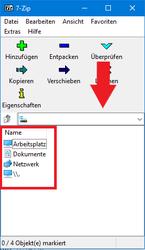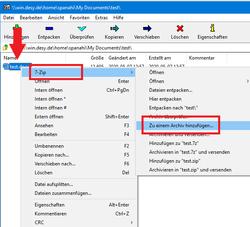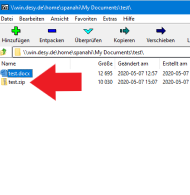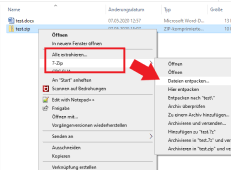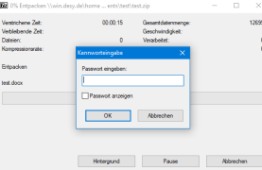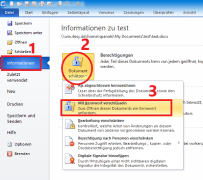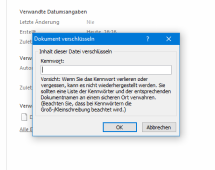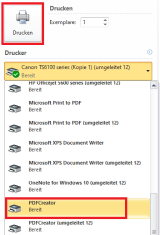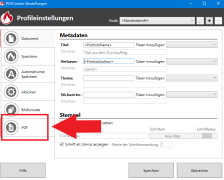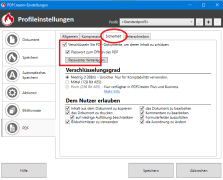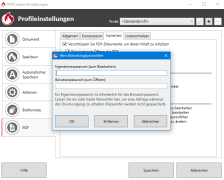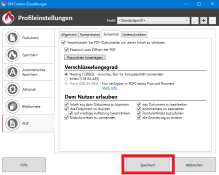URL: https://it.desy.de/services/uco/documentation/secure_data_transmission/@@siteview
Breadcrumb Navigation
Transmission of sensitive Data
This page describes options for the secure exchange of sensitive data. Secure exchange is always required if you need to transmit confidential data such as a certificate of incapacity for work (AU) or similar documents to other persons.
To exchange data securely, the two procedures described on this website are recommended for data protection considerations. In the first step, you can protect your documents appropriately, and in the second step, you can securely transmit or make them available to other persons. Without additional protection, your transmitted data could possibly be viewed by third parties. Please refer to the General Information section of this website for further information. These recommended procedures were developed in consultation with D4.
Please note that the transmission of documents between the group managements and V2 via the so-called winsaphr is not affected by this. This procedure is still valid and will be continued.
Option 1: Using DESY Sync & Share ☁
Hints about the technical details concerning this procedure can be found in the FAQ on the bottom of this web site.
|
Option 2: Send by Email ✉
Hints about the technical details concerning this procedure can be found in the FAQ on the bottom of this web site.
|
General Information
|
FAQ
How do I create a Password protected Zip File using 7-Zip
Install the 32-bit or 64-bit version of the program - depending on which version of the Windows operating system is installed on your computer. Here you can read, if necessary, how to find this out on your device.
Navigate to the file to be compressed. As you are used to from the Windows file explorer, you can click through - either via the drop-down menu or via the list. (Figure 1)
Right click on the file, select 7Zip and then "add to archive". (Figure 2)
In the opened window, enter "zip" as the archive format. Under "Verschlüsselung/Encryption", type a password in the two fields and then click "OK". (Figure 3)
In addition to the original version of your file, you now have a password-encrypted and compressed version in "filename.zip" format. You can now use this version for data transfer. (Figure 4)
Right-click on the file to open it, then either click directly on "extract all" or first on "7zip" and then on "extract files". You can now select the location for the "unzipped" files. 7zip also offers the possibility to unzip directly at the location of the ZIP file. To do so, select "Unzip here". (Figure 5)
Now enter the password to decrypt and decompress the file. (Figure 6)
How do I protect a Word file (DOCX - File) with a password?
Open your Word document and click on "File/Datei". Click on "Information", then on "Protect document/Dokument schützen" and finally select "Encrypt with password/Mit Kennwort verschlüsseln". (Figure 1)
Now choose a password. Click "OK" and repeat the process to confirm the password. (Figure 2)
How do I protect a PDF file with a password?
With the PDF Creator you can easily encrypt a PDF file. If you want to protect a PDF file with a password, proceed as follows:
The PDF Creator program is already installed on your DESY computer as a virtual printer or can be installed viaDSM/Netinstall. If you want to create a PDF file with the PDF Creator, you must therefore click "Print". Afterwards, however, do not select your usual printer, but "PDF Creator". (Figure 1) You can also convert Word documents and all other printable files into an encrypted PDF file this way.
Now the PDF Creator opens. Click on "Settings/Einstellungen" . (Figure 2)
Click on "PDF" in the menu bar on the left. (Figure 3)
Then click on the "Security/Sicherheit" tab. Here you can now choose any password to open the file and additionally the encryption level. (Figure 4) This means you can define what the recipient is allowed to do with the document. For example, whether the recipient may edit or print the document. There are several options available to you, so you can protect your PDF individually and according to your needs.
Now enter a password as owner and click "OK". (Figure 5)
Now click on "Save/Speichern" to save the PDF file at the desired location. (Figure 6)
UCO Hamburg

| Phone: | +49 (0)40 8998 5005 |
| E-Mail: | UCO Hamburg |
| Location: | 2b / 131d |
| Link: |
 https://it.desy.de/services/uco
https://it.desy.de/services/uco
|


